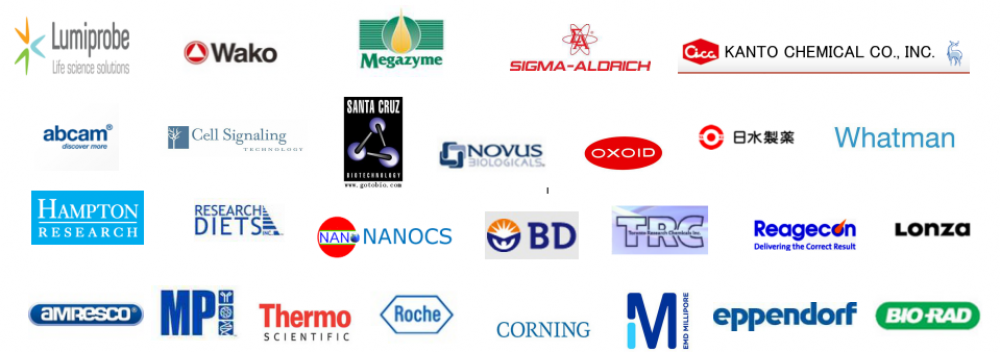类器官基质胶 Organoid Culture ECM (Reduced Growth Factor)
货号:M315066
规格:10mL
品牌:bioGenous
产品介绍
Product Description:
Basement membranes are thin continuous layers of specialized extracellular matrices that form the interface on which epithelial, endothelial, or neuronal cells grow. Basement membranes also support muscle and Schwann cells of the peripheral nerves as they are found surrounding these cells. The bioGenousTM Organoid Culture ECM is a soluble form of basement membrane extracted and purified from the Engelbreth-Holm-Swarm (EHS) tumor. The major constituents of the bioGenousTM Organoid Culture ECM include laminin, collagen IV, entactin/nidogen, and heparin sulfate proteoglycan.
bioGenousTM Organoid Culture ECM is a reduced growth factor hydrogel that allows the complete control of the organoid culture microenvironment to allow for more consistent cell growth and reproducible experiments. It supports the growth and maintenance of human embryonic stem cells (hESCs) and tissue-derived stem cells, and for the in vivo study of both healthy and tumor organoids derived from various organs. bioGenousTM Organoid Culture ECM is compatible with all culture media and gels at temperatures above 10°C to form a reconstituted basement membrane.
技术参数
Product Information:
|
Component
|
Cat#
|
Volume
|
Concentration
|
Storage& Stability
|
|
bioGenousTM Organoid Culture ECM (Reduced Growth Factor)
|
M315066
|
10ml
|
8.5-9.0 mg/mL
|
-20℃,24 months
|
CAUTION: bioGenousTM Organoid Culture ECM will start to gel if kept above 10°C for an extended period. We recommend that you make aliquots and store at –80°C to –20°C to avoid repeated freeze-thaw cycles.
Directions for Use
1. Start by thawing the bioGenousTM Organoid Culture ECM by submerging the vial in ice in a 4°C refrigerator, overnight.
2. After the bioGenousTM Organoid Culture ECM has been completely thawed, gently swirl the vial to carefully mix the content of the vail on ice at all times.
3. If working with small volumes make aliquots of the bioGenousTM Organoid Culture ECM by gently pipetting it into pre-cold tubes on ice and immediately store the remaining at -20°C.
Note: All cultureware including pipette and centrifuge tubes used should be pre-chilled/ice-cold to avoid the bioGenousTM Organoid Culture ECM from clogging. However, if clogging occurs, the matrix may be re-liquified by placing it at 4°C in ice for 24-48 hours.
4. bioGenousTM Organoid Culture ECM can be used at a recommended dilution ratio of >70% (ECM: culture medium = 7:3).
Note: Excessive dilution of bioGenousTM Organoid Culture ECM below 50% dilution may result in an extremely thin and fragile non-gelled protein layer that cannot support continuous organoid growth.
5. Dispense the required volumes of the matrix-cell mixture in the well.
6. Incubate the plates at 37°C for 15-20 mins and then add the appropriate volume of a pre-warmed growth medium for the specific organoid type.
Directions on Coating with bioGenousTM Organoid Culture ECM
bioGenousTM Organoid Culture ECM (Reduced Growth Factor) could be used in the preparation of thin Gel, thick gel, or thin coating. Thin Gel preparations allow cells to be cultured on top of the gel while the Thick Gel enables the growth of cells within a three-dimensional matrix. Thin Coating could also be done to support cell growth on top of a complex protein layer.
Thin Gel
1. Start by thawing the required amount of bioGenousTM Organoid Culture ECM.
2. Gently mix the bioGenousTM Organoid Culture ECM. Be careful not to introduce bubbles into the gel.
3. Dispense 50 µl/cm2 of growth surface into the pre-chilled culture plate.
4. Incubate the plates at 37°C for 30 minutes before use.
5. Aspirate any unbound gel on the surface of the plate and rinse once with the basal organoid medium.
Thick Gel
1. Start by thawing the required amount of bioGenousTM Organoid Culture ECM.
2. Gently mix the bioGenousTM Organoid Culture ECM. Be careful not to introduce bubbles into the gel.
3. Add the recommended amount of cells to the bioGenousTM Organoid Culture ECM on ice and dispense 150-200 µl/cm2 of growth surface.
4. Incubate the plates at 37°C for 30 minutes before use.
5. Add culture medium and incubate at 37°C.
Thin Coating Method
1. Start by thawing the required amount of bioGenousTM Organoid Culture ECM.
2. Gently mix the bioGenousTM Organoid Culture ECM. Be careful not to introduce bubbles into the gel.
3. Using the basal organoid medium, dilute the bioGenousTM Organoid Culture ECM. It is necessary to optimize the dilution media to determine the optimal dilution for your investigation.
4. Dispense enough diluted bioGenousTM Organoid Culture ECM to cover the entire growth surface.
5. Incubate the plates at room temperature for 60 minutes.
6. If any unbound materials remain, aspirate and rinse gently using the basal organoid medium.
NB: If gel-coated plates are not used immediately after coating, add PBS to prevent evaporation and store at 4°C for up to 5-10 days.
